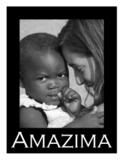Share the love of reading to your child or students!
This is a great resource from Tim Rasinski to give to your parents, so that they understand their role as a partner in reading with their child.
Paired Reading: HOW TO DO IT
Reading Together
1. Both you and your child read the words out loud together. Read at the child’s
speed. You are modeling good reading for your child.
2. As you read together, read every word. To make sure your child
is looking at the words, one of you points to the word you are
reading with a finger or card. It’s best if your child do the pointing.
3. When a word is read incorrectly, you say the word correctly, and then have your
child immediately repeat the word.
4. Show interest in the book your child has chosen. Talk about the pictures. Talk
about what’s in the book as you go through it. It is best if you talk at the end of a
page or section, or your child might lose track of the story. Ask what things might
happen next. Listen to your child – don’t do all the talking.
Time
1. Try very hard to do Paired Reading every day for 5 minutes. If your child wants
to read longer, a total of 15 minutes is long enough.
2. Select a time that is good for both you and your child. Don’t make him do Paired
Reading when he really wants to do something else.
3. For days when you are not available, train someone else to be a substitute.
Grandparents, older brothers and sisters, aunts, and baby-sitters can be
excellent reading role models, too.
Place
1. Find a place that’s quiet. Children are easily distracted by noise. Turn off the
T.V., radio, and stereo.
2. Find a place that is private. No one else should be in the room. Many families
find this a great opportunity for one parent to spend time with just one child.
3. Find a place that is comfortable so both of you can concentrate on the story
without having to shift around. This will associate warm and snuggly feelings
with reading.
Reading Alone
1. When you are reading together, allow your child to read alone when he feels
confident and wants to. Agree on a way for him/her to signal you to stop reading
along. This could be a knock, squeeze, or tap with the elbow. (Saying “be quiet”
or similar words might make your child lose track of the meaning of the story.)
When signaled, you immediately stop reading aloud and feel glad that your child
wants to be an independent reader.
2. When your child comes to an unknown word, wait five seconds to allow time for
him to use word attack skills. If he reads the word correctly, praise the
accomplishment. However, if your child is unable to work it out after five
seconds, you say the correct word. Then the child repeats the word and both of
you read together out loud until the next signal to read alone.
If your child misreads a word, you say the word correctly and have him repeat the
word correctly. Then continue with both of you reading out loud together until the
child signals again.
3. You may not be able to finish a book or chapter in one sitting. When you start
the next day, briefly discuss what happened so far in the story and start reading
where you left off.
4. If you finish a book before the end of the time, read the book again. Repeated
reading is very good practice. It builds confidence and comprehension.
5. If the book has not been completed by the end of the week, it’s O.K. The child is
not expected to read every book alone. The focus of Paired Reading is
enjoyment of reading together.
Points to Remember
• Pointing
• Pacing
• Discussion
• Waiting 5 seconds
• Child repeating words correctly
• Signaling to read alone
• Praising
Come check out my Page for other ideas for Home- Literacy Connection.
























I am bookmarking this for when Noah starts learning to read! Thank you Christina for the tips!
ReplyDeleteI shared on my FFF Facebook page :)
Love you!
This is a great reminder for any parent! Thank you for posting.
ReplyDelete~Stephanie
Teaching in Room 6